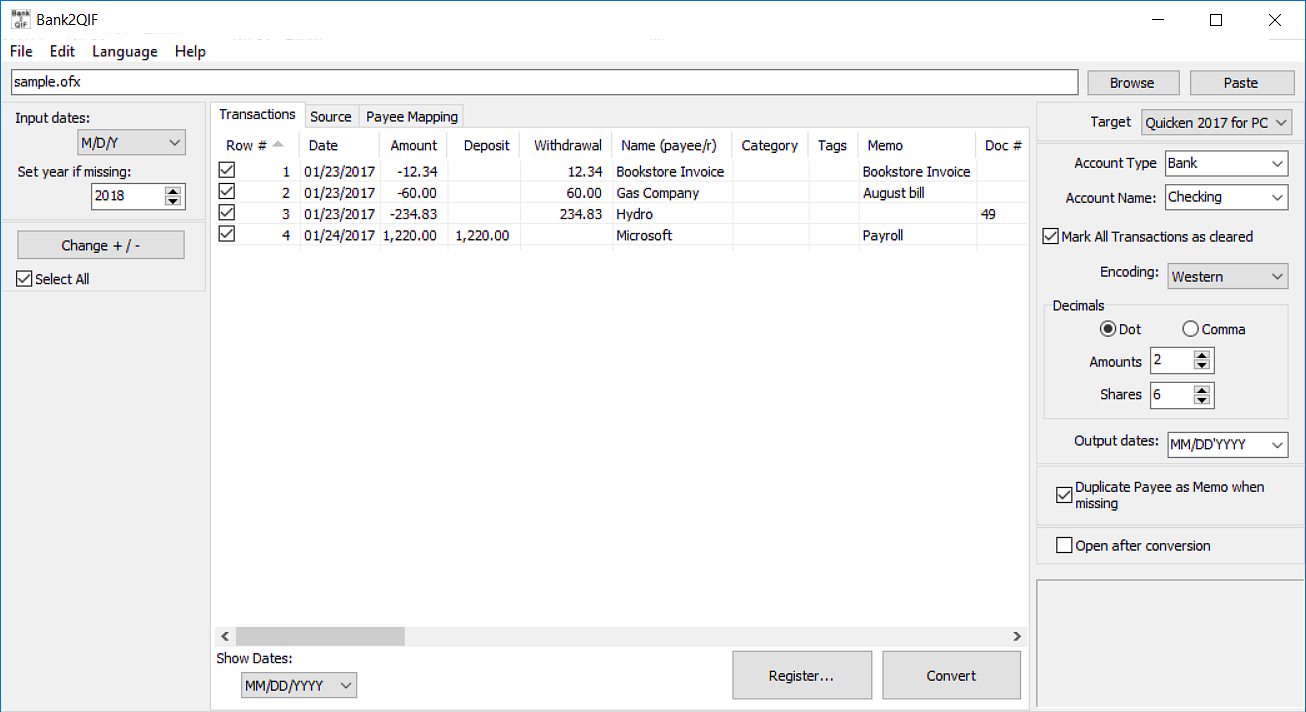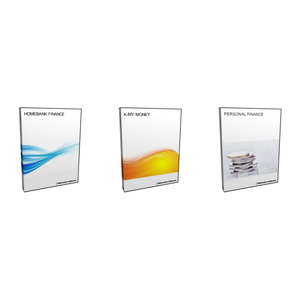
How To Import Ofx Into Quicken For Mac
POI Editor lets you view, edit and convert Points of Interest files from GPS devices such as TomTom, Navman, Garmin and many others. To get started click 'Load POI File' and import a Point of Interest file directly from your PC or GPS device. Or, click 'Add Point' to create a POI file from scratch. Poi converter for mac. Online POI editor for Windows 10, PC, Mac, GPS units and GPS enabled smartphones. Create and edit your own GPS POI files. Free for all. MAC, PC, and Linux versions are available there. Nuvi 350, 760, 1695LM, 3790LMT, 2460LMT, 3597LMTHD, DriveLuxe 50LMTHD, DriveSmart 61, Garmin Backup Camera 40 and TomTom XXL540s. Login or register to post comments. POI Loader allows you to load custom points of interest into your unit. The input files can be downloaded from the internet or you can create your own. With POI Loader, you can configure the unit to alert you when you are within a certain distance of a point or if you are driving over a certain speed near a point; perfect to warn you about upcoming schools zones, red lights and speed cameras.
If you chose a Mac instead of a PC when you purchased a new computer, you may need to make some adjustments to import your files. If you want to transfer your Quicken files from your PC to your new Mac, you need to prepare the old files for that process. The Mac version of Quicken offers a different set of options. The Mac version of Quicken offers a different set of options and abilities than the PC version but Quicken does support exporting your PC files so you can import them on a Mac. Quicken supports transferring your accounts, securities, transactions and categories to Mac.
Apple Card users will be able to export their transaction data in an OFX file format for use with third-party financial apps 'within the next few days,' a support representative said in an online chat with customer Jed Schmidt.The exporting feature rolled out last month, but only with CSV file support. Apple said an OFX option would be available in the future. The option to export transactions shows up when a monthly statement is available, and the data can then be imported into budgeting apps like Quicken and Mint.
How to Export and Download Apple Card Transactions
- Open the Wallet app on your iPhone and tap on Apple Card.
- Tap on Card Balance.
- Under Statements, tap on the statement you want to export.
- Tap on Export Transactions, and then email, print, save, or share the file.
To apply for an Apple Card, simply open the Wallet app on an iPhone running iOS 12.4 or later, tap the plus button in the top-right corner, and follow the on-screen steps. The process takes just a few minutes, and if approved, your digital Apple Card will be ready for purchases immediately. A physical titanium-based Apple Card is also available for use at retail stores that do not accept contactless payments.

here's what i got, looks like OFX is on the way. pic.twitter.com/TmUrm2Ucby
— Jed Schmidt (@jedschmidt) February 5, 2020Guides
Upcoming
Front Page Stories
Tim Cook Offers Work From Home to Most Apple Staff Amid Coronavirus Concerns
Apple's Upcoming 5G iPhone Could Be Delayed Due to Coronavirus
10 hours ago on Front PageiPhone 11 Models Seeing Shortages in NYC
1 day ago on Front PageTop Stories: 14-Inch MacBook Pro, iMac and Mac Mini Refreshes, and New AirPods on Horizon?
2 days ago on Front PageApple Launches Repair Program for Blank Screen Issue Affecting Third-Generation iPad Air
2 days ago on Front PageSXSW 2020 Canceled Due to Coronavirus Concerns
2 days ago on Front PageApple Encouraging Employees in Silicon Valley to Work From Home Amid Coronavirus Outbreak
2 days ago on Front PageCamera Comparison: iPhone 11 Pro Max vs. Samsung Galaxy S20 Ultra
2 days ago on Front Page